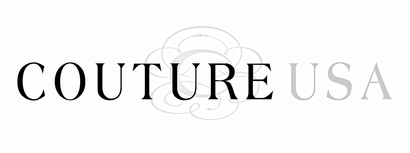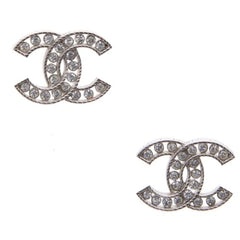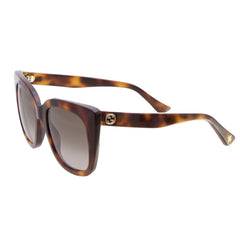Your Bag is Empty
Menu

A Peek Inside the Rarified World of Haute Couture
February 27, 2017 4 min read

"What is Haute Couture?" It was one Google's most popular questions in 2016, and the answers lie in an intriguingly private world that most people never see. Haute couture customers are notoriously private and this question took a little digging, but the answer is nothing short of riveting.
A Little Background of Haute Couture
Haute couture was born in the late 1800's, when Charles Frederick Worth became the first famous fashion designer. Before that, wealthy patrons were served by somewhat anonymous dressmakers who made house calls. Worth changed the fashion landscape by opening an atelier and making his customers come to him for fittings. His creations were so sought-after that customers made no qualms about it, and they loved the instant recognition they got when they wore House of Worth dresses. Fast-forward to 1947, immediately after World War II, when Christian Dior debuted his opulent and often voluminous New Look. In the post-war economic boom, fashion connoisseurs had appetites for extravagance, and made-to-order couture garments hit their peak consumption. In the 1950s, there were over 45,000 artisans and seamstresses employed in the making of couture, compared with around 4,500 employed today. Couture had more that 200,000 customers worldwide compared with around 200 today.  Because haute couture is tailor-made for specific customers and can't be purchased off the rack like ready-to-wear, the price tags are stratospheric. A single item can start at roughly $20,000, with more intricate designs climbing to rates in the hundreds of thousands. They are one-of-a-kind pieces and their customers demand exclusivity on each garment. The ladies in this selective group don't want to see their dresses in advertisements or worn by celebrities. That type of publicity is the kiss of death for a couture garment, and the customer expects to be the only one in the world wearing it. But such over-the-top connoisseurship begs the question: who actually buys couture?
Because haute couture is tailor-made for specific customers and can't be purchased off the rack like ready-to-wear, the price tags are stratospheric. A single item can start at roughly $20,000, with more intricate designs climbing to rates in the hundreds of thousands. They are one-of-a-kind pieces and their customers demand exclusivity on each garment. The ladies in this selective group don't want to see their dresses in advertisements or worn by celebrities. That type of publicity is the kiss of death for a couture garment, and the customer expects to be the only one in the world wearing it. But such over-the-top connoisseurship begs the question: who actually buys couture?
Deep black embroidered embellishments backstage of the #GiorgioArmaniPrivé #SS17 show. #PFW A post shared by Armani (@armani) on
A Glimpse of the Haute Couture Customer
To say that the "Couture Club" is exclusive is a massive understatement. For the female members of this un-official group, confidentiality is sacred. They have special access to the designers themselves, who in turn will never give up their clients' names. When the haute couture shows happen in Paris each January and July, these ladies begin the laser-focused business of wardrobe acquisition. They come from both old and new money, and they invariably stay at the Ritz where they're treated to all of the perks that come with being big spenders. Even though their funds run deep, they still approach each season with a budget. They know approximately how much a piece will cost based on its craftsmanship, even though there are no price tags. At the shows, they see more than what's on the runway: they see the potential. When they watch, they are mentally dropping waistlines, cutting off sleeves, and altering hemlines. When they visit designer ateliers the next day, they talk with design directors about which pieces they liked, and how they envision them to be changed. Soon after, the selected gowns (along with accompanying seamstresses) are flown to the customers for many series of fittings. The average time spent constructing a couture gown from start to finish? 150 hours.
Women who wear couture swear by the fit, saying that once it's slipped on it becomes a second skin. Women who buy couture are known to be fastidious about their diets. Many of these pieces are only worn once or twice to high-profile galas, dinners, or philanthropic events. The women see these gowns as an investment in their image, which translates into their ability to raise money at charitable events. A quick note about this echelon of society: the more money one raises by hosting galas, the faster one moves up through the ranks. Couture customers often give their lightly worn gowns to museums as tax-deductible donations. They (rightly) see their gowns as art, and view buying them as something akin to investing in sculpture or a painting.
What It Takes to Be a Couture Designer
To be considered haute couture, a designer has to be officially sanctioned by the Paris-based Chambre Syndicale de la Haute Couture. The approval process is lengthy and stringent, and the decades-old professional association reviews its roster every year. The biggest players in the haute couture arena are Chanel, Christian Dior, Givenchy, and Valentino. Even though the customer base is limited, designer labels still maintain that couture brings value to their brands. The couture shows generate attention, which generates buzz and has a trickle-down effect for brands' lower-priced items. Couture customers are heavily courted by luxury houses; if they can't attend the shows, they receive DVDs and can order fittings over the phone. But no matter how ardently couture customers are wooed, one thing it unavoidable: their numbers are dwindling.
A post shared by Valentino (@maisonvalentino) on
What is the Future of Haute Couture?
Patrons understand haute couture's merit, and though they purchase for status, they also deeply appreciate it. Like any fine art, their couture collections are meticulously cared for and maintained. They only surround themselves with the finest of everything and always purchase the best. This lofty world is unseen by most and is the last frontier of true luxury. With such discerning traditions, it might be said that couture isn't just an experience, it's a lifestyle. Despite a decreasing customer base, haute couture still holds an incredible amount of value. At the very least, its an untempered outlet for creative directors like Karl Lagerfeld, and it often serves as an idea springboard for lower price points. However, many people have wondered about the future of couture. Recently, ready-to-wear designers Vetements and Proenza Schouler (as of July 2017) have opted to show during couture week... will this lessen its exclusivity and caché? That remains to be seen, but for now luxury labels remain steadfast.
*New Look image courtesy of Y_Aihara via Flickr
Recent Articles
- All you need to know about Chanel Flap bags November 03, 2023
- Should we say Saint Laurent or Yves Saint Laurent? May 22, 2023
- Top Summer Travel Essentials July 14, 2022
- Gift Ideas Your Mom will Love April 29, 2022
- Walk a Mile in the Latest Shoe Trends April 20, 2022
Couture VIP
Sign up now for exclusive pre-sale alert before anyone else!
+30 OFF your first purchase of $300 or more
Cookie Policy
By continuing on this website, you consent to the use of cookies by CoutureUSA and our partners. Our goal is to offer you a more enjoyable shopping experience with personalized content and advertising. For more information, please read our Privacy Policy.
OK More Info

Welcome Back!
YOU HAVE THE FOLLOWING ITEMS WAITING IN YOUR CART!
BUY NOW BEFORE IT'S TOO LATE!
VIEW CART




























































































